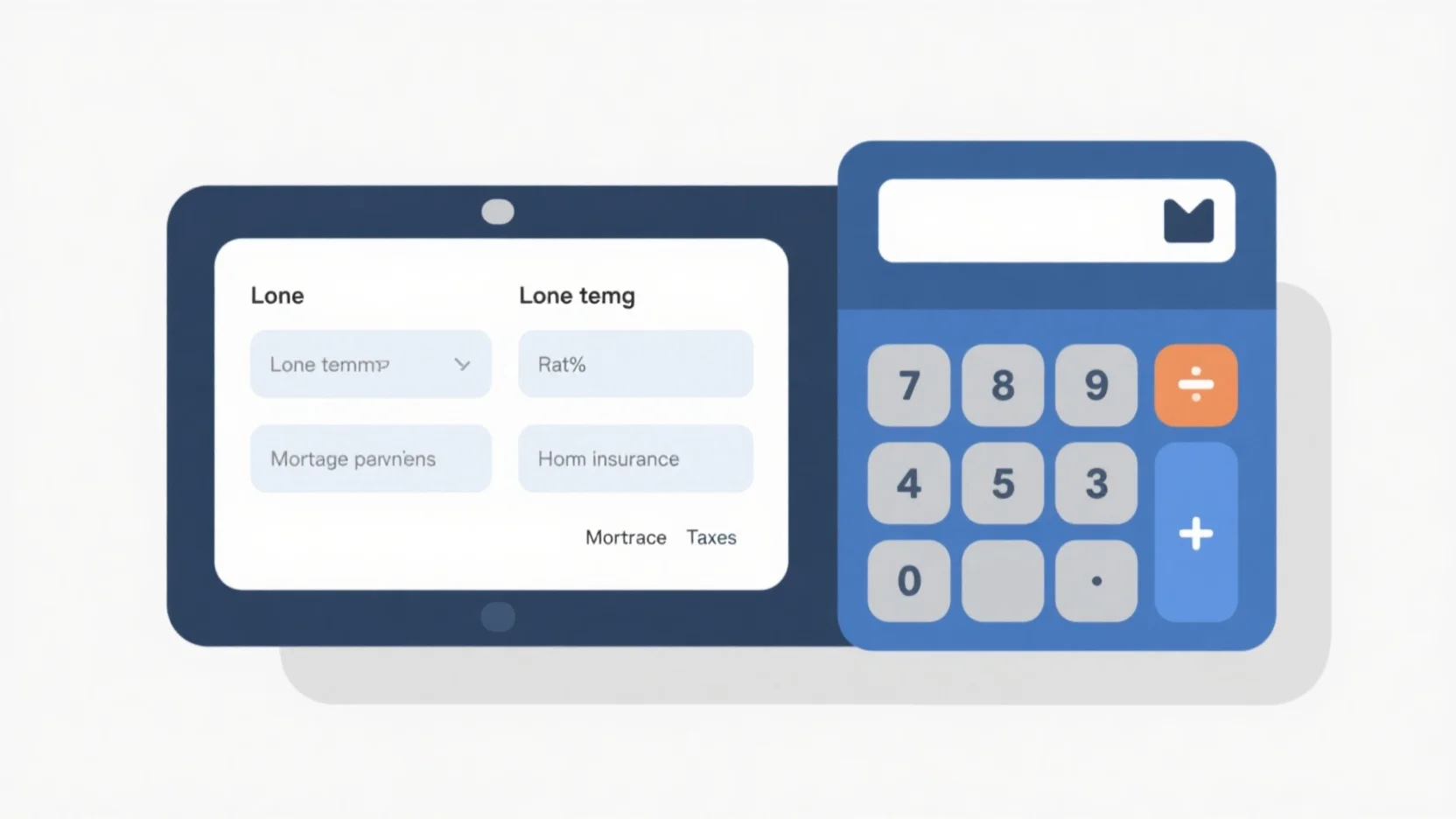
The Ultimate Guide to Calculating Mortgage Payments with Taxes and Insurance

Image Source: pexels
Figuring out your mortgage payments can feel overwhelming, right? But trust me, it’s worth it. Including taxes and insurance in your calculations helps you avoid surprises. Did you know 9% of homeowners in the U.S. see taxes and insurance make up over half their payment? Learning how to calculate mortgage payments with taxes and insurance keeps you prepared.
Key Takeaways
- Your mortgage payment has principal, interest, taxes, and insurance. Knowing these parts helps you plan better.
- An online mortgage calculator makes payment math easy. Enter your loan info, and it gives a quick estimate.
- Finding lower interest rates can save lots of money. Check offers from many lenders to get the best rate.
Key Components of a Mortgage Payment

Image Source: pexels
When you break down a mortgage payment, it’s made up of a few key parts. Let me walk you through them.
Principal and Interest
The principal is the amount you borrowed to buy your home. Every time you make a payment, part of it goes toward reducing this balance. The interest, on the other hand, is what the lender charges you for borrowing that money. These two together form the foundation of your monthly payment.
Here’s a quick breakdown of the components of a mortgage payment:
| Component | Description |
|---|---|
| Principal | Pays down the loan balance. |
| Interest | The cost of borrowing the loan amount. |
| Taxes | Local property taxes paid through escrow. |
| Insurance | Homeowners insurance and private mortgage insurance, if needed. |
Principal and interest usually stay the same throughout the loan term. Taxes and insurance, though, can change over time.
Taxes
Property taxes are a big part of your payment. These taxes fund schools, roads, and other public services. They’re collected by your lender and held in an escrow account. Did you know property tax rates vary a lot by state? For example:
| State | Effective Property Tax Rate (%) |
|---|---|
| New Jersey | 2.08 |
| Hawaii | 0.26 |
| Alabama | 0.36 |
If you live in a high-tax state, your monthly payment could be much higher.
Insurance
Homeowners insurance protects your home from disasters like fires or storms. If you’re in a high-risk area, like Florida with hurricanes, your premiums might skyrocket. On average, homeowners insurance costs $1,544 annually, but it can go over $4,000 in some states. Factors like your home’s location, size, and condition all play a role in determining your insurance cost.
So, when you calculate your mortgage payment, don’t forget to include these components. It’s not just about the loan—it’s about the full picture.
How to Calculate Mortgage Payments with Taxes and Insurance
Figuring out how to calculate mortgage payments with taxes and insurance might seem tricky, but it’s easier than you think. Let me show you three simple ways to do it.
Using a Mortgage Calculator
One of the easiest ways to calculate your mortgage payment is by using an online mortgage calculator. These tools do all the heavy lifting for you. You just plug in details like your loan amount, interest rate, loan term, property taxes, and insurance costs. In seconds, you’ll get an estimate of your monthly payment.
Some calculators even go the extra mile. They include features like handling property taxes as a percentage or annual amount, explaining PMI (Private Mortgage Insurance) requirements, and breaking down HOA fees. Here’s a quick look at what the best calculators offer:
| Feature | Description |
|---|---|
| Monthly Payments | Estimates payments including taxes, insurance, PMI, and HOA fees. |
| Input Definitions | Users can click on ‘define’ & ‘more’ tabs for detailed descriptions of each input. |
| Property Tax Handling | Handles property tax as a percentage or annual amount based on user input. |
| PMI Requirements | Explains when PMI is required based on Loan-to-Value (LTV) ratio. |
| Homeowners Insurance | Covers various aspects of homeowner policies and exclusions. |
| HOA Fees | Details on HOA dues and potential increases over time. |
| Glossary of Terms | Provides an in-depth glossary of industry-related terms for better understanding. |
I recommend trying one of these calculators. It’s fast, accurate, and super convenient.
Manual Calculation Formula
If you prefer doing things the old-fashioned way, you can calculate your mortgage payment manually. It’s not as hard as it sounds. Here’s the formula:
| Symbol | Description |
|---|---|
| M | Total monthly mortgage payment |
| P | Principal loan amount |
| r | Monthly interest rate (annual rate divided by 12) |
| n | Number of payments (loan term in years multiplied by 12) |
The formula looks like this:
M = P [r(1+r)^n] / [(1+r)^n – 1]Once you calculate the principal and interest, add your estimated property taxes and insurance premiums. This gives you the total monthly payment. It’s a bit of math, but it works like a charm.
Estimating Taxes and Insurance
Taxes and insurance can vary a lot depending on where you live and your home’s value. To estimate property taxes, check your local tax rate and multiply it by your home’s assessed value. For insurance, get quotes from a few providers. Don’t forget to include PMI if your down payment is less than 20%.
Knowing how to calculate mortgage payments with taxes and insurance helps you plan better. Whether you use a calculator or do it manually, you’ll have a clear picture of your monthly costs.
Factors That Affect Mortgage Payments
When it comes to your mortgage payments, several factors can make a big difference. Let me break them down for you.
Loan Term
The length of your loan, or loan term, plays a huge role in determining your monthly payment. A shorter loan term, like 15 years, means higher monthly payments but less interest paid over time. On the other hand, a 30-year loan spreads out the payments, making them smaller each month. If you’re wondering how to calculate mortgage payments with taxes and insurance for different loan terms, try plugging the numbers into a mortgage calculator. It’s a quick way to see how the term affects your budget.
Interest Rate
Interest rates can significantly impact the total cost of your mortgage. Even a small change in the rate can add up over time. For example:
| Interest Rate | Total Repayment | Difference from 6% |
|---|---|---|
| 6% | $431,680 | N/A |
| 7% | $478,160 | $47,480 |
As you can see, a 1% increase in the rate could cost you tens of thousands of dollars. That’s why shopping around for the best rate is so important.
Down Payment
Your down payment size directly affects your monthly payment and overall costs. A larger down payment lowers your loan amount, which means smaller payments. For instance, putting down 20% instead of 10% on a $500,000 loan could save you over $96,000 in total payments. Plus, a bigger down payment helps you avoid private mortgage insurance (PMI). Here are some other benefits:
- Reduces monthly payments
- Lowers total interest owed
- Qualifies you for better loan terms
If you’re figuring out how to calculate mortgage payments with taxes and insurance, don’t forget to factor in your down payment.
Property Taxes and Insurance Rates
Property taxes and insurance rates vary depending on where you live. High-tax areas or regions prone to natural disasters can drive up your costs. For example, if you live in New Jersey, you’ll pay an average property tax rate of 2.08%, while in Hawaii, it’s just 0.26%. To estimate these costs, check your local tax rate and get insurance quotes. These numbers are essential when calculating your total mortgage payment.
Tips to Lower Your Monthly Mortgage Payments
Lowering your monthly mortgage payment can feel like a huge relief, right? Let me share a few strategies that can help you save money and manage your budget better.
Choosing a Longer Loan Term
One way to reduce your monthly payment is by extending your loan term. For example, switching from a 15-year mortgage to a 30-year one spreads out your payments over a longer period. This makes each payment smaller and easier to handle.
Tip : Keep in mind, though, that a longer loan term means paying more interest over time. Here’s why:
- Interest keeps accruing during the extended period.
- You’ll end up paying more in total interest costs.
- While monthly payments drop, the overall cost of the loan increases.
If you’re okay with the trade-off, this could be a good option for you.
Shopping for Better Interest Rates
Did you know even a small drop in your interest rate can save you thousands of dollars? I always recommend shopping around for the best rates. Compare offers from different lenders and don’t hesitate to negotiate. A lower interest rate means smaller monthly payments and less money spent on interest over the life of the loan.
Pro Tip : Check your credit score before applying. A higher score often qualifies you for better rates.
Refinancing Your Mortgage
Refinancing can be a game-changer. It allows you to replace your current loan with a new one, often with better terms. For instance, you might secure a lower interest rate or switch from an adjustable-rate mortgage to a fixed-rate one. Both options can stabilize or reduce your monthly payments.
Here’s how refinancing can help:
- Lower your principal and interest payment.
- Eliminate private mortgage insurance (PMI).
- Shorten your loan term to pay off your mortgage faster.
Note : Before refinancing, calculate the breakeven point. This is when the savings from lower payments offset the upfront costs of refinancing. If you plan to sell your home soon, refinancing might not be worth it.
Reducing Property Taxes or Insurance Costs
Property taxes and insurance can take a big bite out of your budget. To lower these costs, start by appealing your property tax assessment if you think it’s too high. Many homeowners successfully reduce their taxes this way.
For insurance, shop around for better rates or bundle your home and auto policies for discounts. If you’re in a low-risk area, consider increasing your deductible to lower your premium.
Quick Tip : Review your insurance policy annually. You might find coverage you no longer need, which can save you money.
By using these tips, you can take control of your mortgage payments and free up more room in your budget. Which one will you try first?
Understanding your mortgage payments, including taxes and insurance, makes financial planning easier. I recommend using tools like online payment platforms or mobile apps for convenience. Text reminders and dynamic repayment plans also help you stay on track.
Getting prequalified for a mortgage simplifies the process. Here’s how it helps:
| Benefit | Description |
|---|---|
| Simpler homebuying process | Focuses your search on properties you can afford. |
| Clarifies your options | Reveals financial constraints for better budgeting. |
| Improves negotiating power | Shows sellers you’re serious and financially capable. |
Take these steps to manage your mortgage confidently!
FAQ
What’s the difference between property taxes and homeowners insurance?
Property taxes fund local services like schools and roads. Homeowners insurance protects your home from disasters. Both are part of your monthly mortgage payment.
Can I skip escrow for taxes and insurance?
Yes, if your lender allows it. You’ll pay taxes and insurance directly instead. But, you’ll need to budget carefully to avoid missing payments.
How often do property taxes and insurance rates change?
Property taxes usually adjust annually based on local assessments. Insurance rates can change anytime due to factors like claims, inflation, or policy updates. Keep an eye on them!
